A few1 years ago I wrote a short post on a 1933 oscillating razor. Further searching online revealed that it was sold under the name King Oscillator. And to my joy, patents for it are available online.
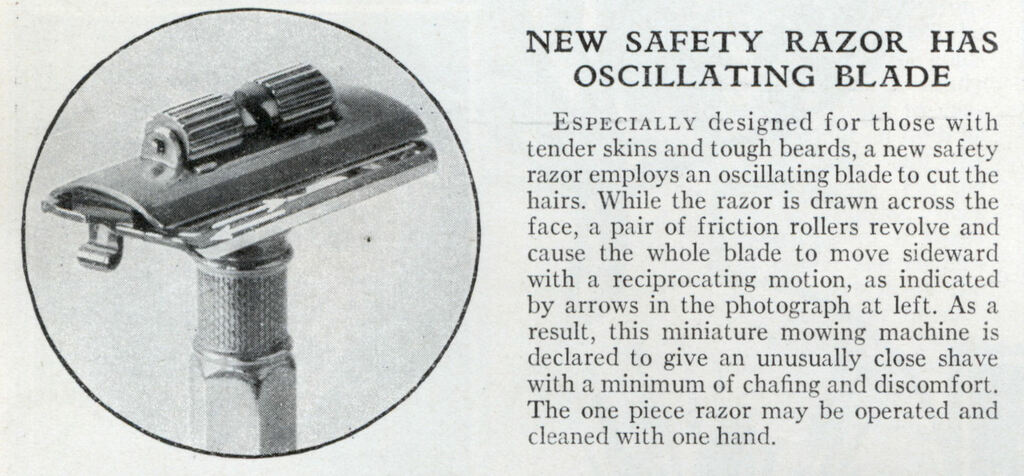
I have also found the design patent for it, namely US design patent2 75,147. Comparing the photo of the razor – especially the handle – as it appeared in Modern Mechanix and the patent drawings, it is most likely the same razor.
How it works – deduction from a single photo
Working from just the photo above, it’s possible to work out how the razor worked:
It is obvious is that the friction rollers cases a cam to rotate, which pushes a stud from side to side. Said stud must connect to the blade, so that rotating the cam causes the blade to oscillate.
It is also obvious to me that the top cap is hinged to the bottom plate. The hinge is most likely on the far side in the photo. On the near side there is a snap hook.
Paul H Behger’s design patent
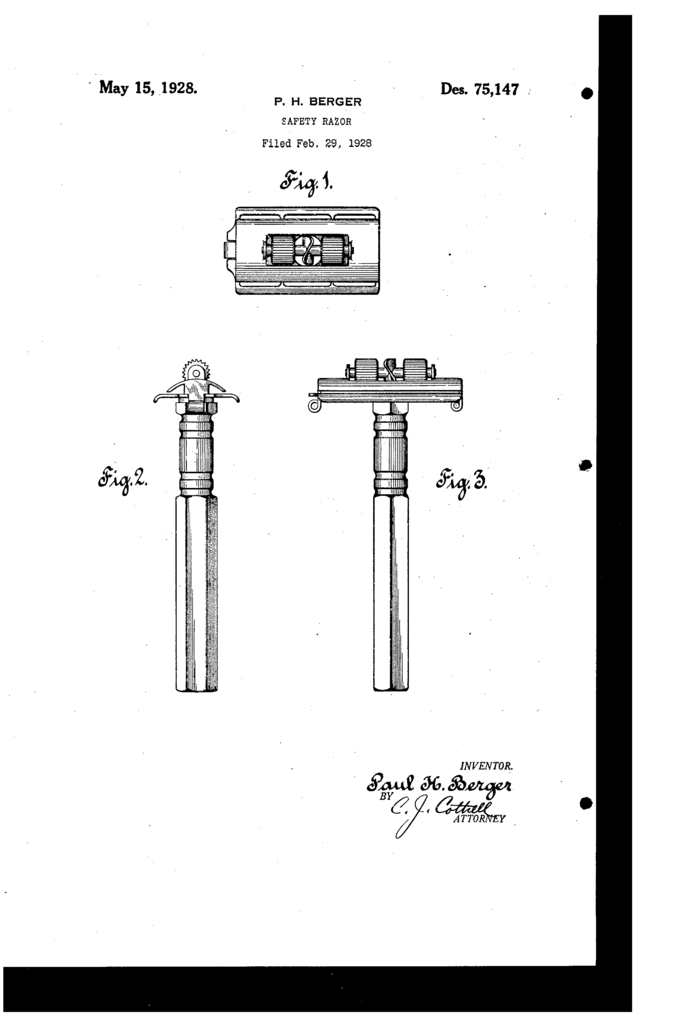
The patent text don’t give us too much information on the how and why the razor work. To quote in full:
To all whom it may concern: having the new and ornamental design ap Be it known that I, PAUL H. BERGER, a citizen of the United States, residing at New York, in the county of New York, State of New York, have invented a new, original, and ornamental Design for Safety Razors, of which the following is a specification, reference being made to the accompanying drawing, forming a part thereof.
US Design Patent 75,147
Fig. 1 is a plan view of a safety razor having the design applied thereto.
Fig. 2 is a side view of a safety razor having the design applied thereto.
Fig. 3 is a front view of a safety razor having the design applied thereto.
I claim:
The ornamental design for a safety razor, as shown.
The design patent given to Mr Berger can be read at Google Patents, and also at Razors.click.
John L King’s utility patents
As mentioned in the start of this post, the razor was sold under the name King Oscillator. In France a similar type was sold as the Vib’Raz3, while a copy was manufactured in Australia under the name Movex.3 A very similar razor was manufactured in England as the Redox Rolling Razor.3 The patents for the King Oscillator was held by John L. King, who patented a series of four4 single edge and two4 double edge razors. Two additional patents used in the King Oscillator was held by Winfred T Parkin, and are covered here as well.
All of Mr King’s patents are variations on the same theme. A friction roller with one or more cams cut into it, causing the blade to move sideways. Variations are mostly in the blade and how the movement is transfered.
US patent 1,366,468 – single edge razor
The earliest of Mr King’s patents, as far as I can tell, had a unique single edged blade. As can be seen in figure 5, the blade had a large cut out. Three fingers (29) on the blade engaged the groves (20) on the rollers directly. While simple in concept, the flimsy blade must have been easy to damage. This probably explains why the idea was developed further in the following patents.
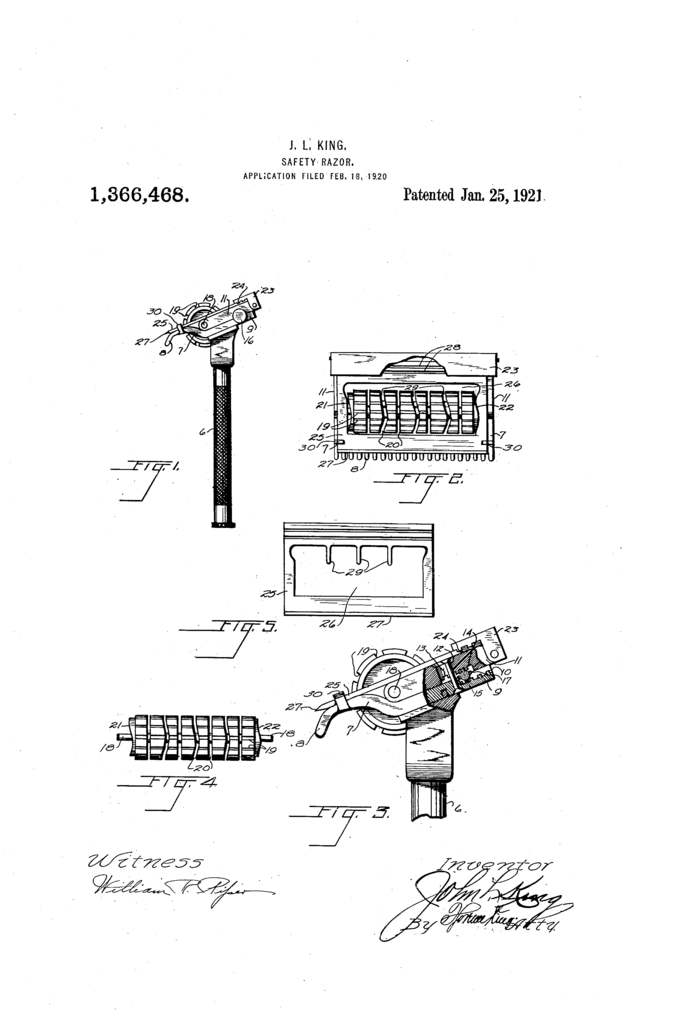
The patent is available on Google Patents.
US PATENT 1,367,909 – SINGLE EDGE RAZOR
Moving away from the fragile blade with a huge hole, this is the second razor Mr King patented. A narrow single edged blade was clamped into a holder, which had a tab (23) that engaged the cam (27) in the roller. The blade holder operates on the same principle – hinge and snap hook – as the later King Oscillator.
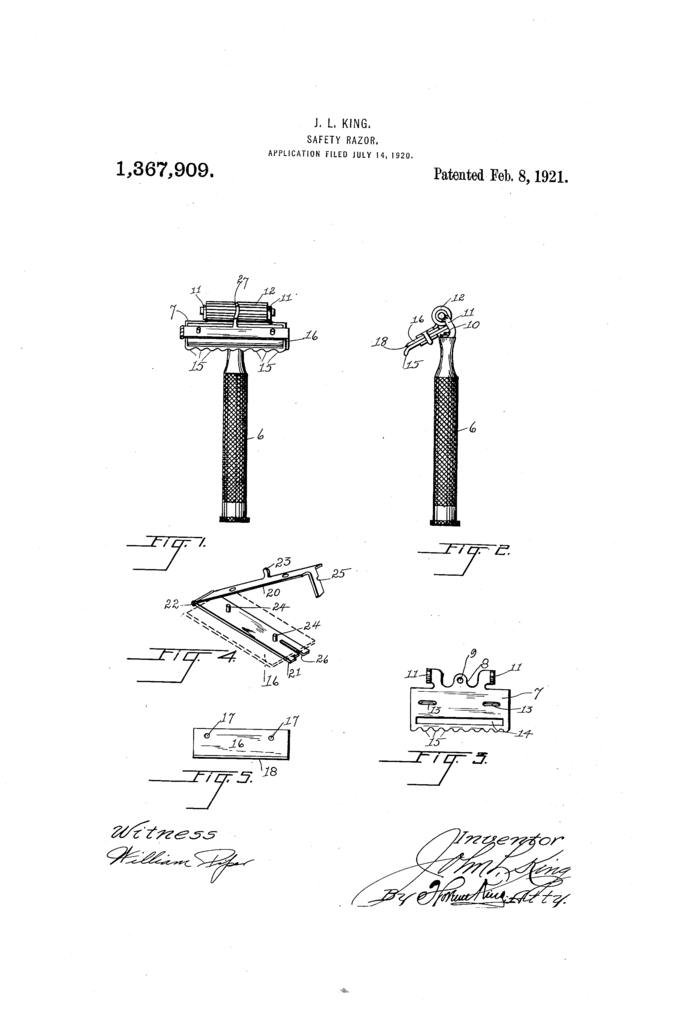
The patent is – again – available on Google Patents.
US PATENT 1,398,379 – SINGLE EDGE RAZOR
This can be seen as a more refined version of the previous invention. It uses a hinged top cap instead of the hinge-and-hook blade holder. In addition it had a lever arm (19) to transfer the motion of the cam (17) to the blade (24). The blade was – interestingly enough – double edged.
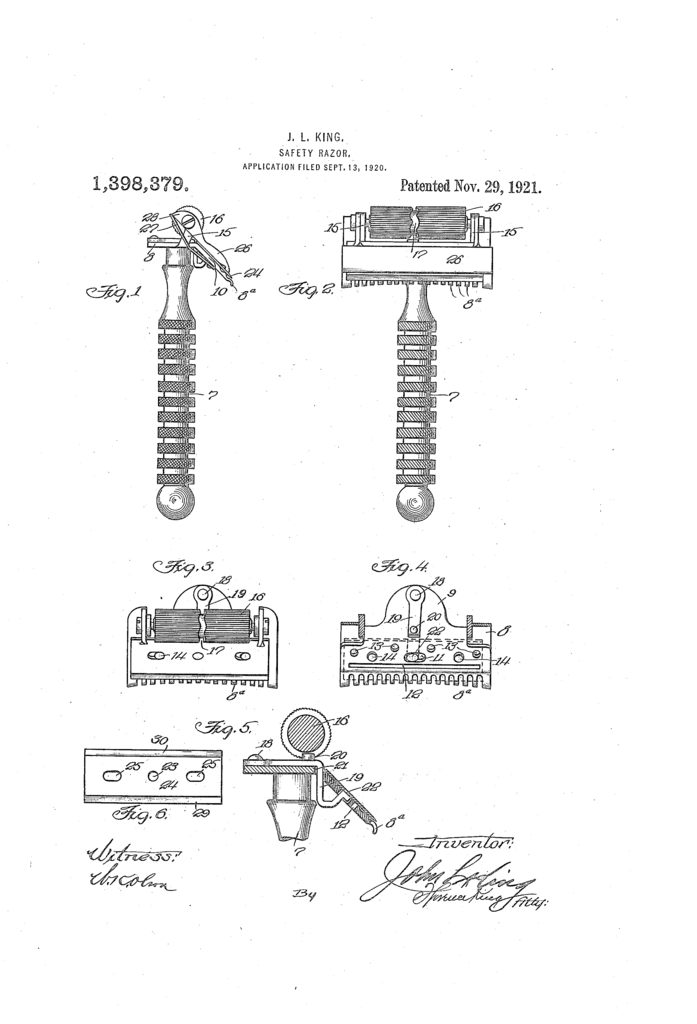
Once again the patent can be read at Google Patents.
US PATENT 1,653,105 – SINGLE EDGE RAZOR
Filed a few years after the previous patent, the last of Mr King’s single edge razors can be seen as the final refinement of the lineage. The lever arm (21) is shorter and less awkwardly shaped. The blade (29) returns to a single edge, not too dissimilar a despined Gem blade.
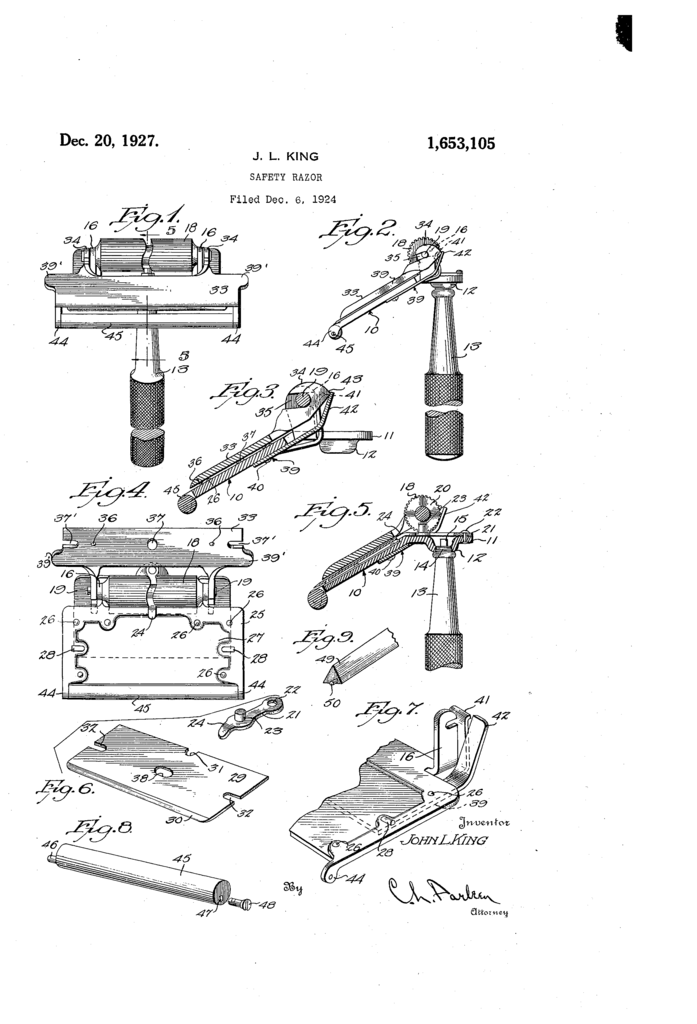
Along with the other single edge patents of Mr King, this too is available on Google Patents. Interestingly enough, Waits’ Compendium have some photos5 of this razor. It was manufactured under the name Rotary King. I also found some photos of it online, see below.
US PATENT 1,679,670 – DOUBLE EDGED RAZOR
The first of Mr King’s double edged razor I can find a patent for. It used a blade that was similar to the double edged Gem blades that were marketed in the 30’s and 40’s. The main difference between this and the Oscillator as shown in Modern Mechanix and Mr Berger’s design patent is a much simpler mechanism for moving the and guiding the blade.
In simple terms, the cam (35) moves a stud (36) on a guiding plate (23), which in turn moves along two elongated holes (15) in a supporting plate (10). The blade (37) is secured to the guiding plate by placing the stud through a hole (39). Two upturned lips (16) on the supporting plate helps guide the blade via the cutouts (40 & 41). And if that sounds complex, it is still simple compared to Mr King’s next patent…
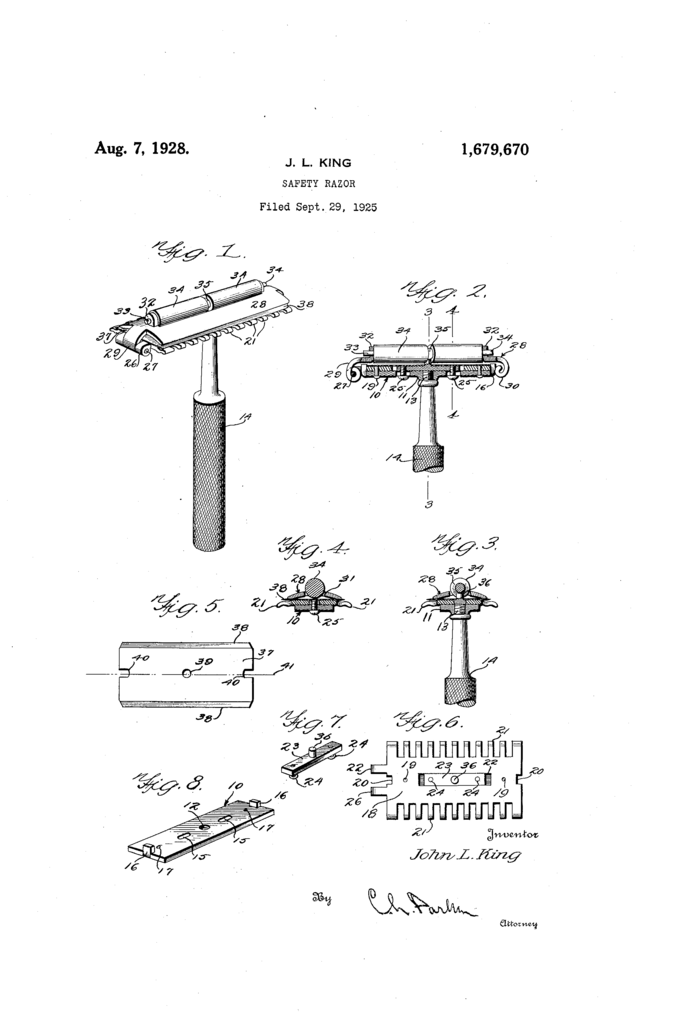
For those curious, this patent is also available on Google Patents.
US PATENT 1,890,733 – Double EDGEd RAZOR
The patent for the actual razor depicted in Modern Mechanics in 1933 – the date on the patent and the handle seems to clinch it. Since it is a double edged razor, the roller is placed symmetrically on the top cap. As was deducted from the photo, the cam (25) in the roller (23) engages a pin (28) which transmit the motion to the blade. The odd cutouts (40) engages diagonal bars (41) and helps guide and control the motion of the blade. The same bars also means that a modern double edged blade is unlikely to have a controlled motion in this version of King’s oscillating razor.
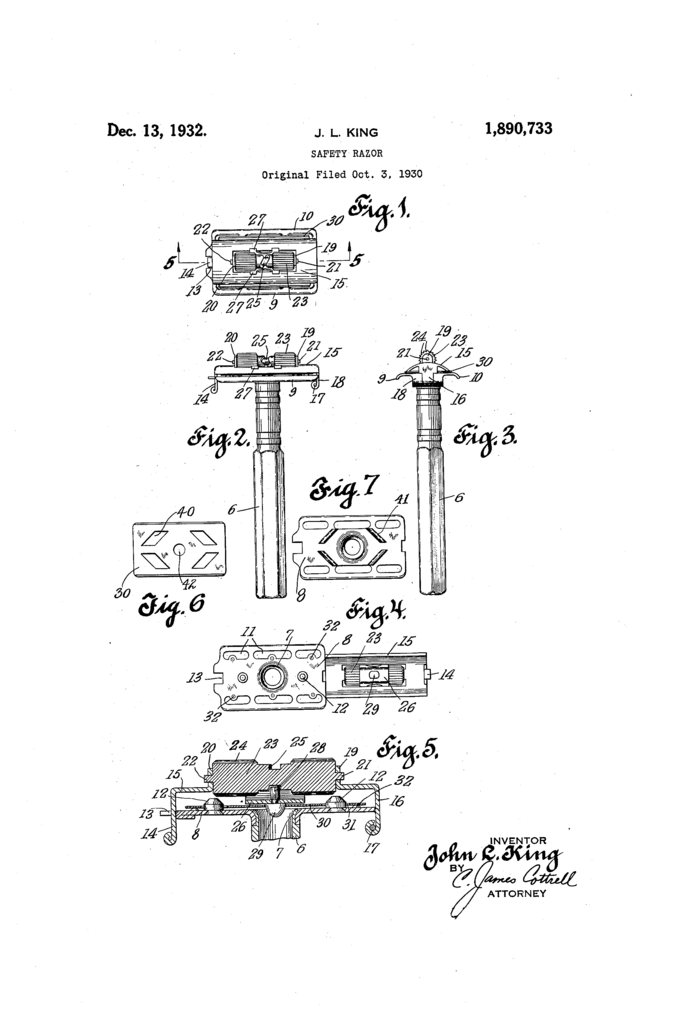
The patent for King’s double edged Oscillator can be read at both Google Patents and Razors.click. I’m not at all convinced this variation was manufactured in any great numbers. The vast majority of pictures I can identify online shows a later variation.
US patent 2,089,414 – Double Edged Razor
A partial return to the arrangement of King’s 1925 patent, this patent by Winfred T Parkin also does away with the guiding and supporting plates under the blade. Instead there is a guiding saddle (30) secured to the top cap, through which a pointed stud (20 & 33) is mounted. The blade (20) is shaped to ride on two sets of lugs (5 & 6).
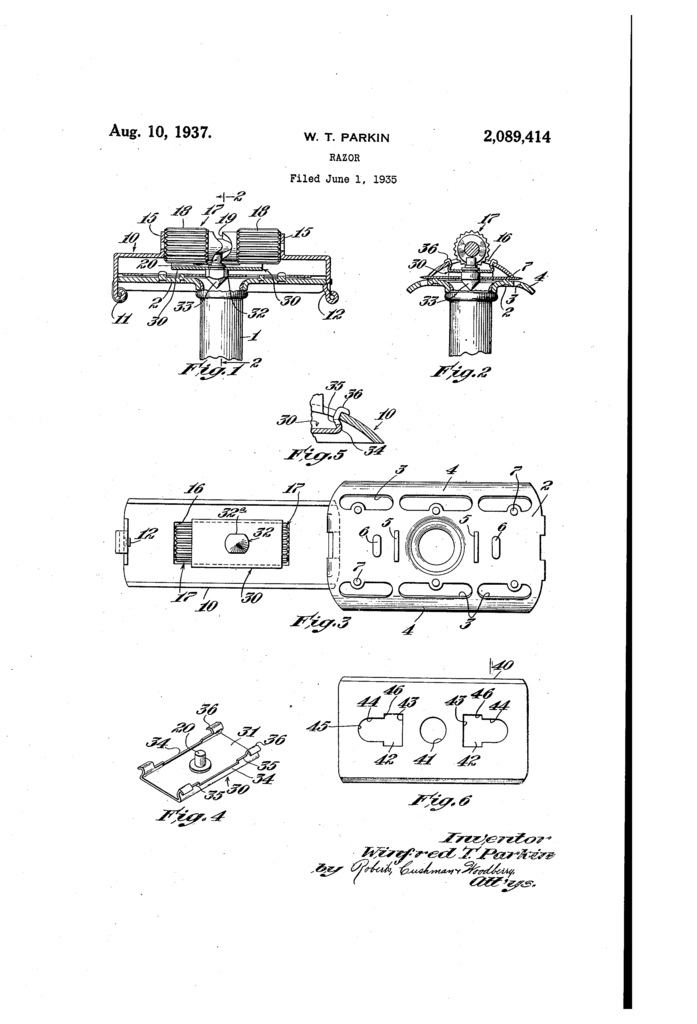
You can read this patent on Google Patents. This razor was manufactured, although there is disagreements between sources if this was marketed as Rotary King6 or King Oscillator.7 Judging by the box I found pictures of – see below – my guess is on the later.
US patent 2,116,280 – double edged razor
The last patent I’ve found that can be connected to King’s Oscillator, this too was held by Mr Parkin. In some ways a return to the earliest of Mr King’s patents, this too had the cam (19) directly engage fingers (46) on the blade (40). Since the fingers were shorter and also – judging by the drawing – wider, they were most likely less fragile than the ones in patent 1,366,468.
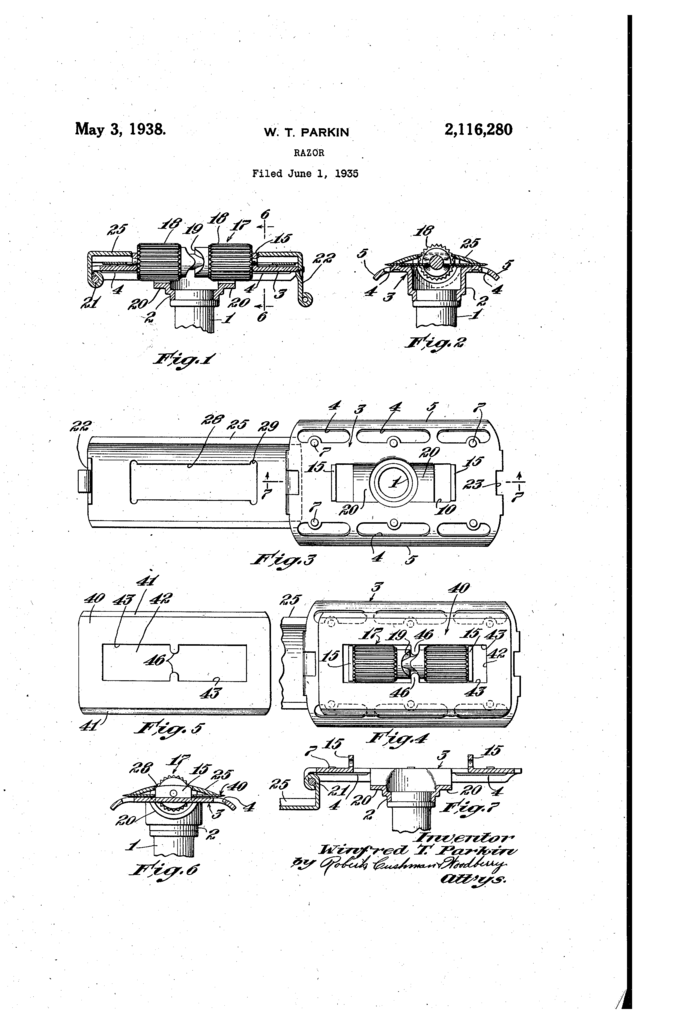
Full text of the patent can be found at Google Patents. This patent is one of two embossed under the baseplate of a late production King’s razor (see below), although I’m not sure which part of this patent was used in the production razor.
Photos from online sources
The company
As far as I can make out from various online sources, the King Oscillating Razor Co was incorporated in Minneapolis, Minnesota in early 1920. It’s unknown if this folded or was renamed, but the Rotary King Safety Razor Co was incorporated in Delaware in 1921. They either created a branch office or moved wholesale to New York, New York the same year. The company was in business until after the War – the last patent I have found was filed in 1935, granted in 1938, and embossed on razors as can be seen above. Additionally I’ve seen advertisements for the King Oscillator from 1946. What likely did the company in was the fact that you required specialized blades for the razor to work properly.
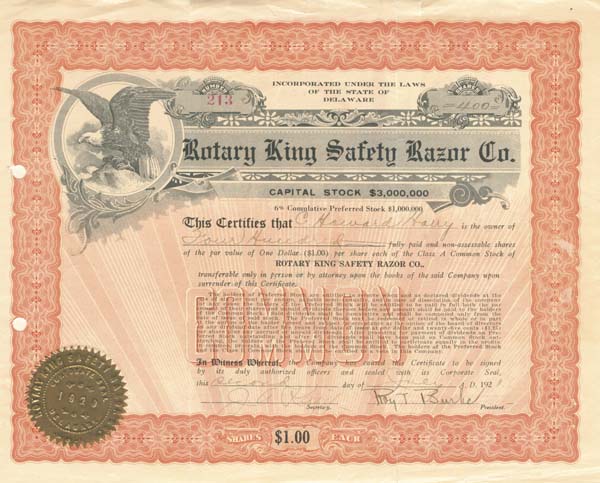
Final thoughs
As I did six years ago, I still think it’s insane to create a razor that forces the user to create more pressure during shaving to operate a friction roller. Despite this, the King Oscillator and Rotary King seem to have been a fairly successful razors in the twenties and thirties – killed, no doubt, by the need for a specialised blade. There must be quite a few in drawers and boxes, and even more must have been disposed of as waste metal or in the landfill.
As a side note, I noticed that Razor Emporium do sell revamped King Oscillators for a reasonable price. I have no idea how they handle a modern double edge blade though, so if anyone has tried it please let me know.
If we see beyond the insanity of the rollers though… the ways the production Rotary King and King Oscillator closes can still make sense for inexpensive new razors. And if you insist on having the blade move… it shouldn’t be too difficult to reimagine the various King razors to work with modern blades, either DE or SE. With eight different patents, there is a lot to draw inspiration from.
Footnotes
1) Perhaps more than a few – is six years a long time in this day and age?
2) A design patent is distinct from a utility patent. The later protects the way an article is used and works. The former only protects how it looks, but not the function.
3) According to Waits’ Compendium, the manufacturers of the first two are unidentified but the Redox was at least sold by Modern Traders Ltd.
4) That I can find on Google Patents at least.
5) Page 170 – Robert Waits’ Razor Compendium is an invaluable resource.
6) According to Waits’ Compendium
7) Claimed by various online sources, mostly eBay listings and forum posts.

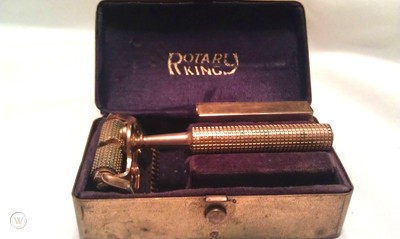
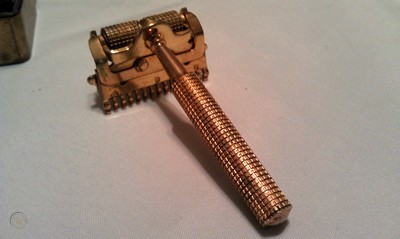
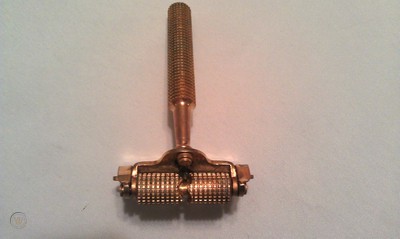
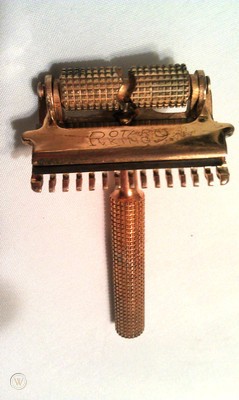
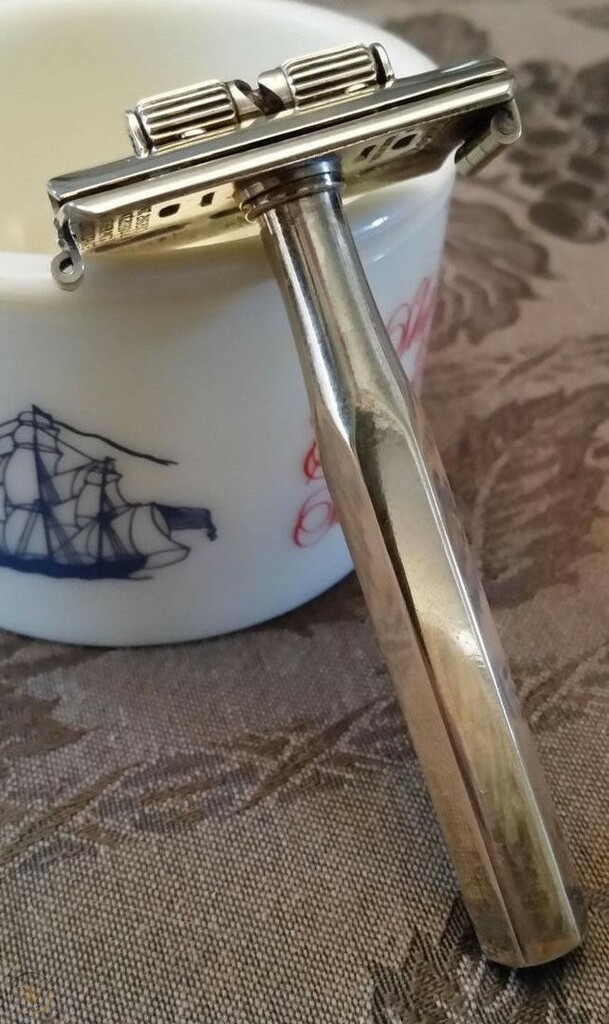
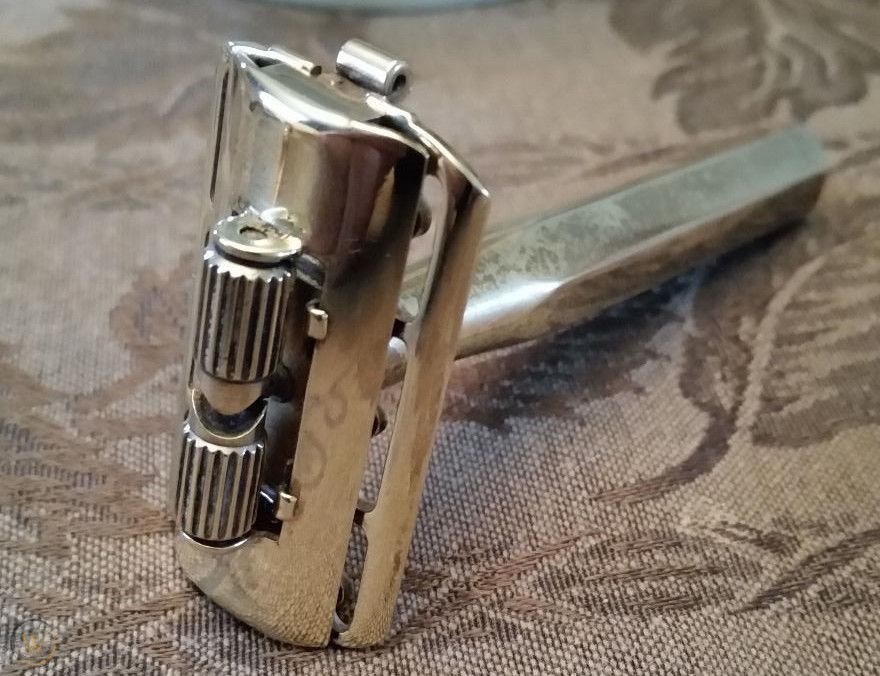
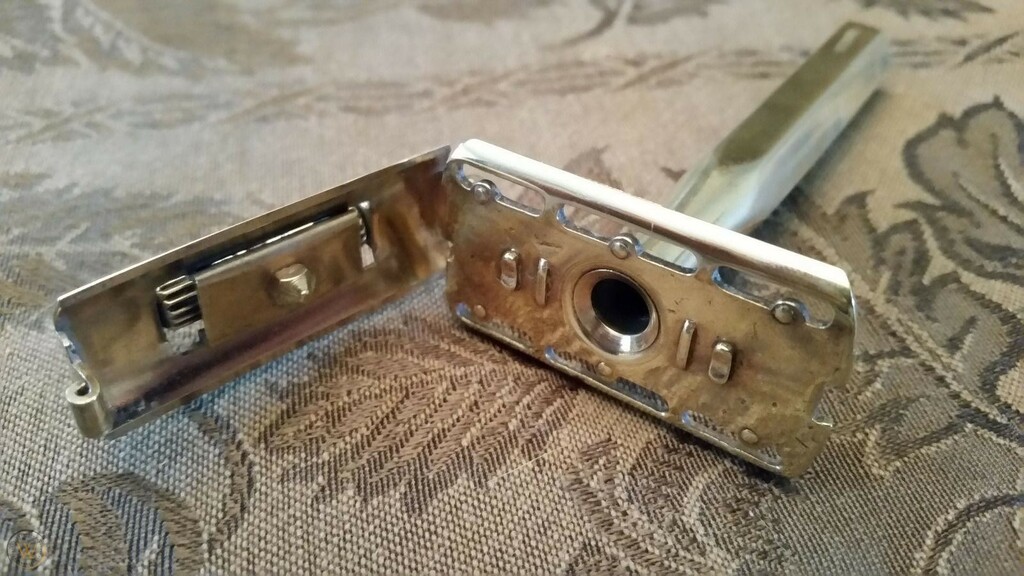
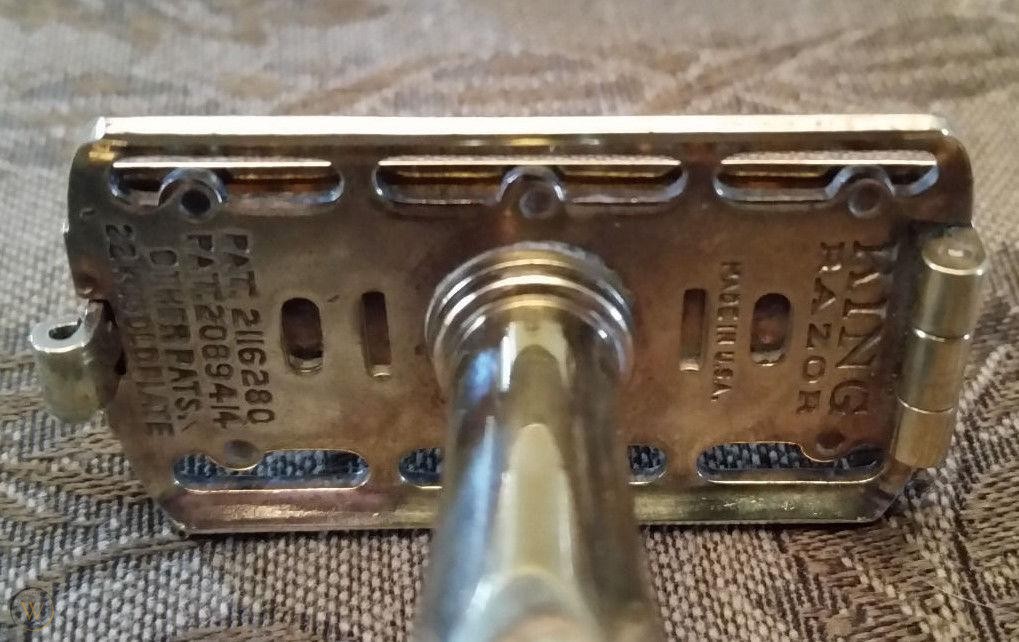
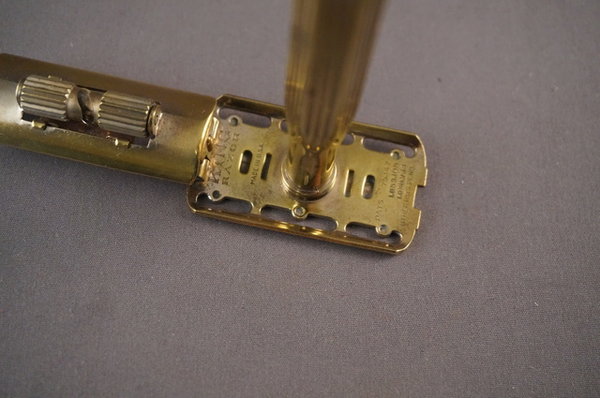
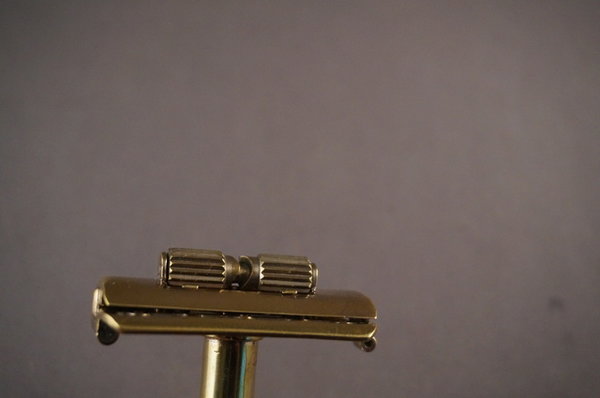
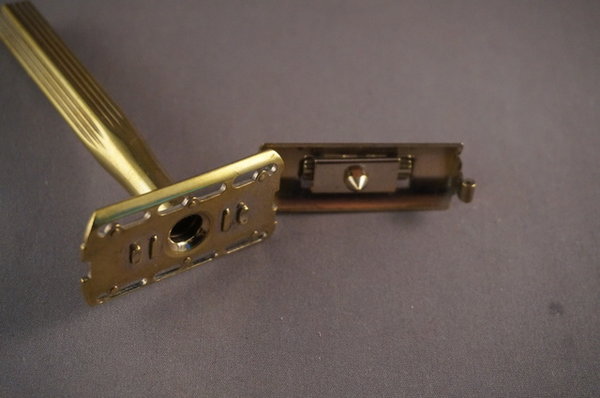
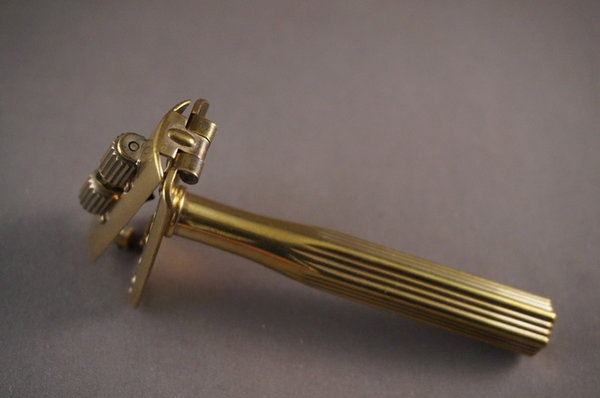
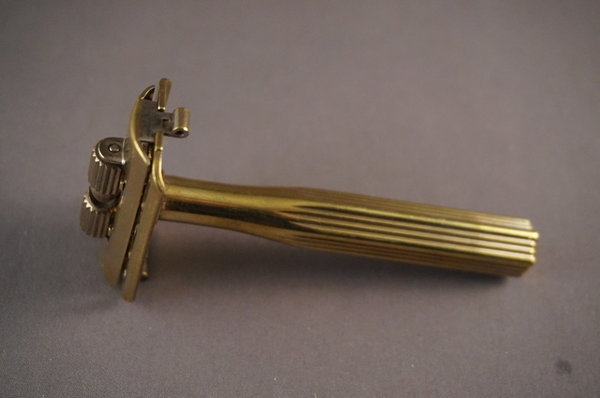
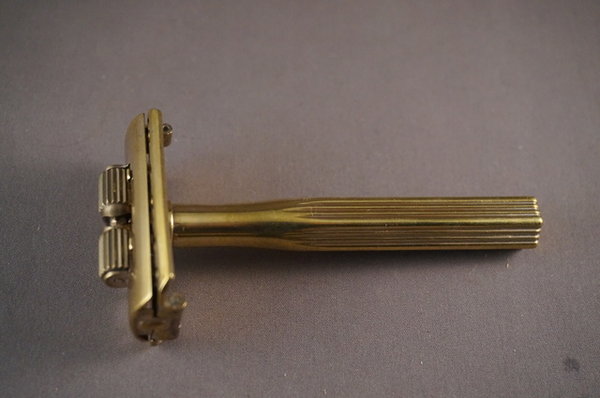
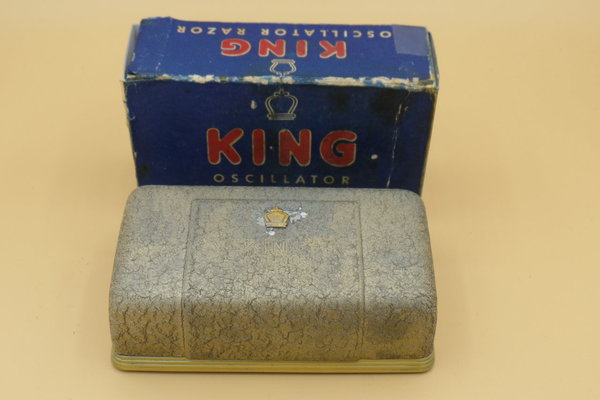
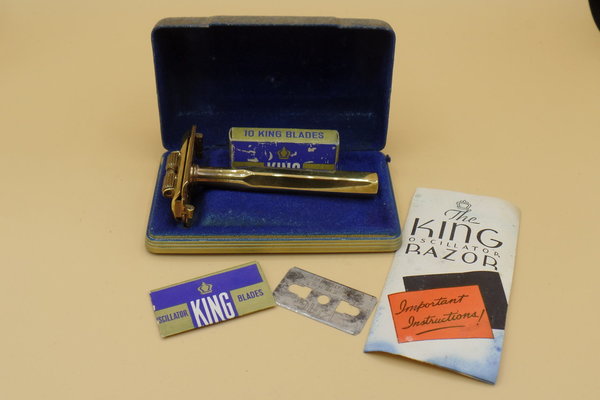
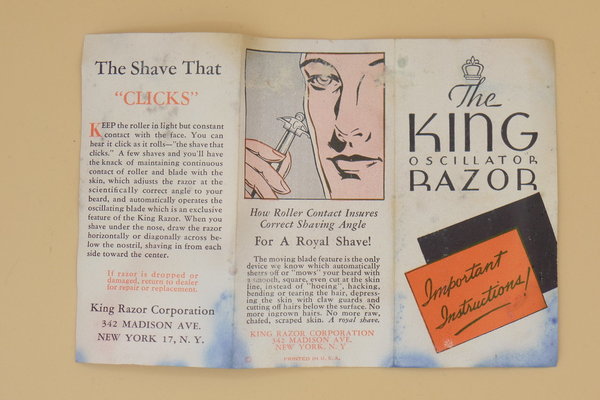
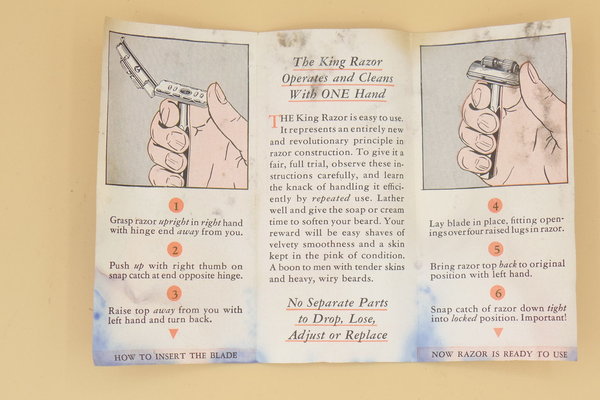
Pingback: Video on the King Oscillator - Wegian WetshavingWegian Wetshaving
Pingback: Adapter for a handle and a cartridge of different razor systems - Wegian WetshavingWegian Wetshaving
Pingback: Reciprocating single edge roller razor - Wegian WetshavingWegian Wetshaving
Pingback: Design for a shaving-mug - Wegian WetshavingWegian Wetshaving